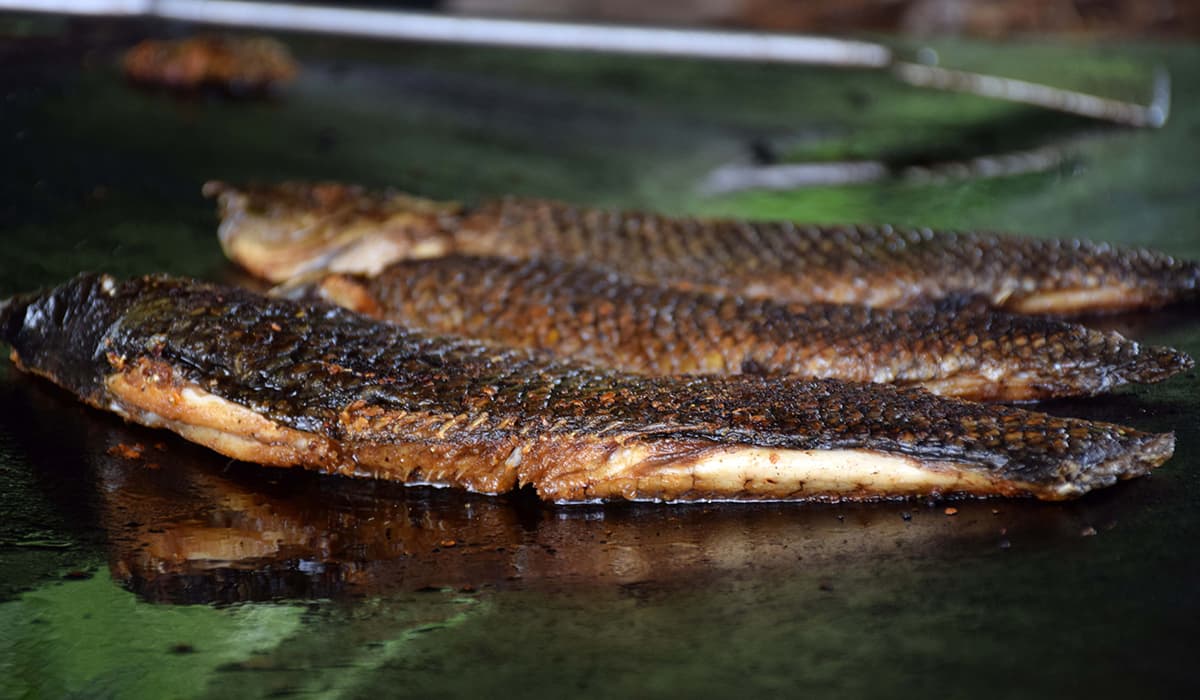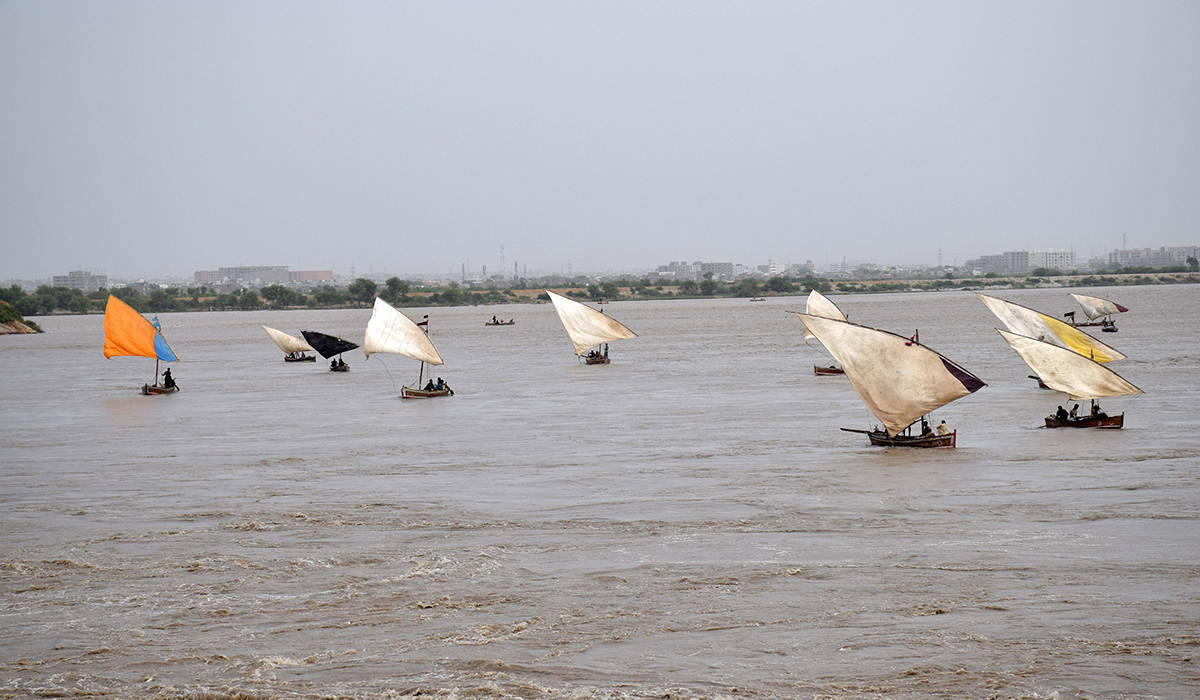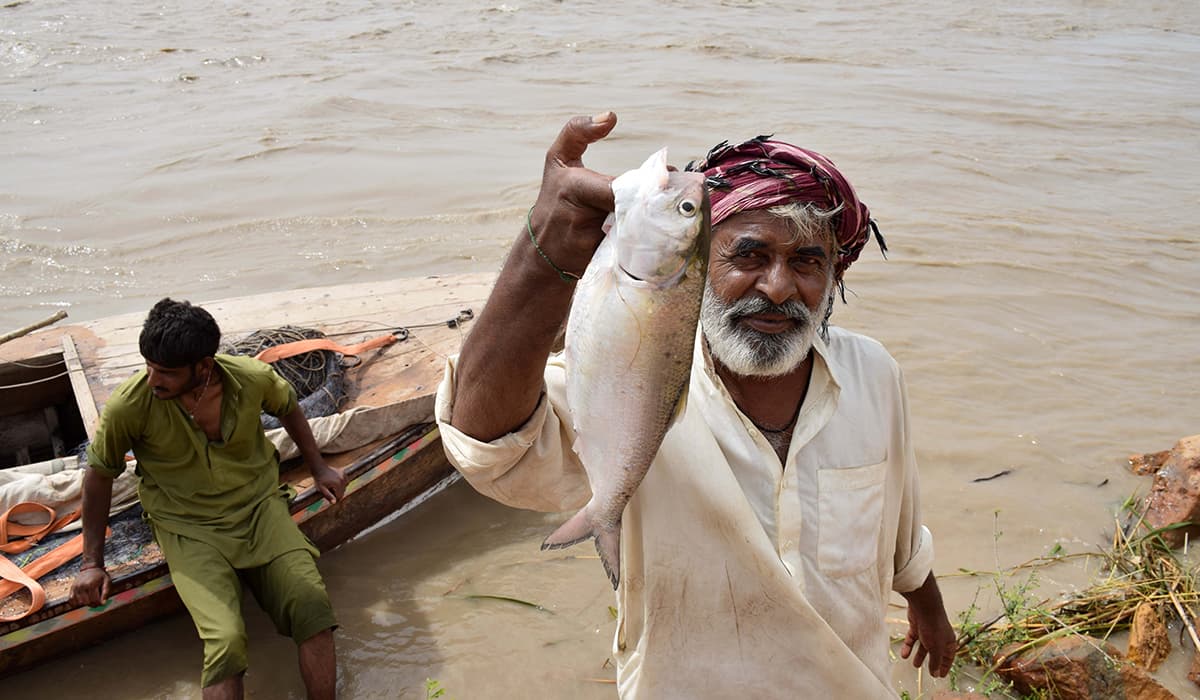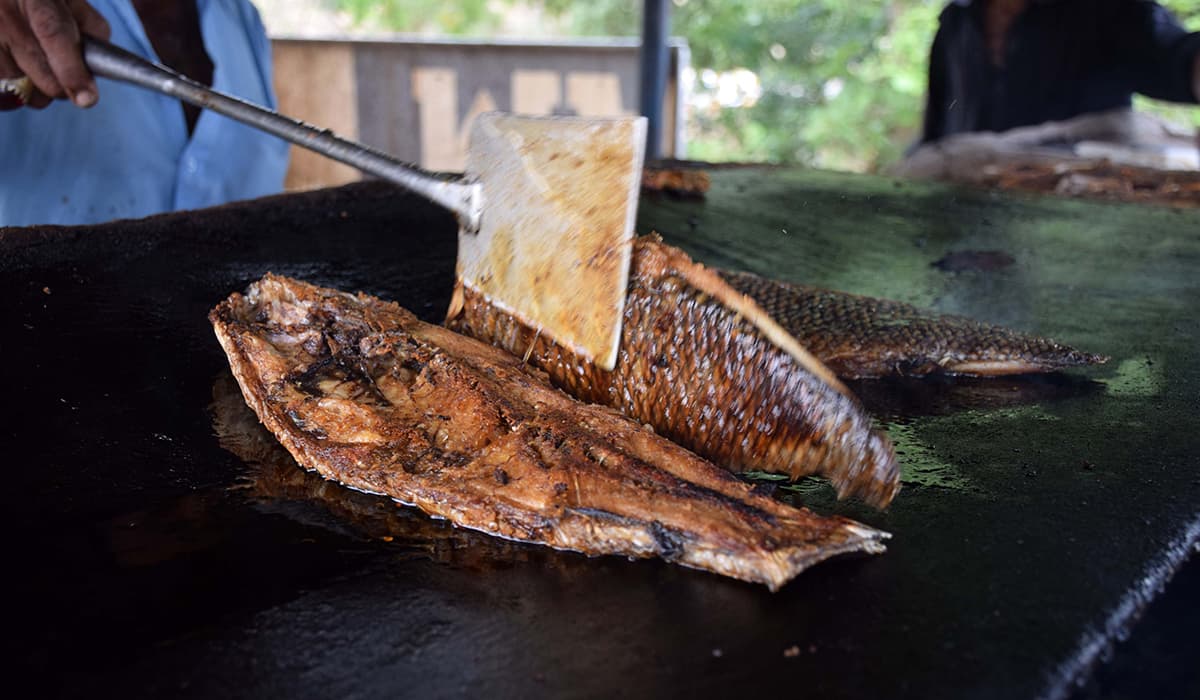The palla, the shrine, the catch and the cook ... River Indus Sindh
A fisherman shows a freshly caught palla.
It is flooding season again in River Indus, with choppy waters rushing downstream towards the Kotri barrage. Under the water's surface though, there is a different kind of activity. The palla fish zooms ahead, continuing its journey upstream against the powerful river currents.
The palla machli, with its silver body glistening from first light, is trapped. The nets positioned just a stone’s throw away from the imposing gates of the Kotri barrage have worked; and a fisherman, Gul Hassan Mallah, has his first catch of the day.
The palla is unique in more ways than one. Unlike most fish, it swims in a straight line against the strong currents of the river, too fast to be caught with routine and known fishing methods. As such, it requires special methods to catch it — nets known locally as mun, dudi, khas, muno, kacho, and pakko, as well as nylon nets, are produced especially to catch palla.
Secondly, it is not confined to the river Indus, being able to thrive in freshwater as well as saltwater. Arab Mallah, a 70 year old fisherman who is an influential part of a union of fishermen in the region, the Taraqi Pasand Mallah Tanzeem, explained, “There are two kinds of palla. The first one lays its eggs in the river and when the eggs hatch, the fish returns to the sea. The other type of palla lays its eggs in the sea and when the fries grow up after a year or so, they travel towards the Indus.”
But palla's affinity with Sindh is much deeper than just inhabiting its principal river. In fact, the legend of the palla is one often told by mohanas (fishermen). It is believed that when the palla starts traveling upstream from Thatta, it is black in colour. But as it passes by the Zindapir shrine near Sukkur, it gains a shining silver colour all over its skin and boasts a beautiful red spot on its head.
Gul Hassan also believes that this affects the taste of the palla. A cooked palla in Thatta tastes like a normal fish, he said, but “when you cook palla caught in Jamshoro (further upstream) the entire neighbourhood would smell its aroma."
And what an aroma it is; a scent that send hunger pangs reverberating throughout one’s body. Fry it or steam it, base it in rice or in curry, the palla provides its exceptionally distinctive taste and smell to every of dish.
Gul Hassan personally prefers the fish roasted, wrapped in a piece of muslin and kept in the soil with some coal providing the necessary heat. Another fan favourite is the palla pulao. And of course, the fried palla, pictured below, is one that never fails to delight the palla lovers.
Fresh palla being fried in a restaurant.
With a rich historical tradition and an unparalleled taste, the palla maintains an important status in Sindhi culture and society. Along with mangoes, the palla is often gifted to people in Sindh’s cities and villages. Families also do not miss the opportunity of having palla for lunch or dinner during the flood season. And no official gathering or meeting is complete without palla on the menu.
Part of the reason of its popularity, according to Arab, is that it doesn’t eat anything other than silt, giving its meat a delicious taste.
“This is the only fish that is eaten from tail to head and every part of it has a different taste”, he said. In fact, in order to meet the demand for palla during off-season, palla has to be especially imported from Iran’s Zahidan area to be sold in Sindh’s markets.
Fishing boats head to Kotri barrage.
A fisherman shows his catch. -Photo by author
Most people prefer the fish to be fried. -Photo by author
Crispy fried and ready to be served.












